Understanding and Managing Strangles in Horses: A Guide to Containment and Treatment
Strangles, often referred to as “horse distemper,” stands as one of the most common and concerning infectious diseases affecting equines worldwide. This highly contagious respiratory condition has challenged horse owners, veterinarians, and stable managers for centuries, with the first recorded cases dating back to 1251 in medieval Europe. The disease earned its evocative name from the severe swelling of the lymph nodes that can, in extreme cases, restrict a horse’s breathing – quite literally making them feel as though they are being “strangled.”
Today, despite significant advances in veterinary medicine, strangles continues to pose a substantial threat to equine populations. The disease affects thousands of horses annually, causing not only significant distress to the animals but also creating considerable economic and logistical challenges for horse owners and equestrian facilities. The causative agent, a bacterium called Streptococcus equi subspecies equi (S. equi), has evolved to become remarkably efficient at spreading through horse populations, with infection rates reaching up to 100% in naive herds exposed to the pathogen.
The impact of a strangles outbreak extends far beyond the immediate health concerns of affected horses. A single case can lead to weeks or months of yard closures, canceled events, stringent biosecurity measures, and substantial veterinary costs. For professional equestrian facilities, this can mean significant financial losses and damaged reputation. Even more concerning is the disease’s ability to create asymptomatic carriers – horses that appear healthy but harbor and shed the bacteria, potentially triggering new outbreaks months or even years later.
The good news is that with proper understanding, swift action, and appropriate management protocols, the spread of strangles can be effectively controlled, and affected horses can make a full recovery. Modern diagnostic techniques allow for faster identification of infected animals, while improved treatment approaches help manage symptoms more effectively. Additionally, preventive measures, including vaccination programs and biosecurity protocols, have become more sophisticated, offering better protection for susceptible populations.
This comprehensive guide aims to equip horse owners, stable managers, and equine professionals with the knowledge and tools needed to understand, prevent, contain, and treat strangles effectively. By understanding the disease’s mechanisms, recognizing early warning signs, and implementing appropriate management strategies, we can work together to minimize the impact of this challenging but manageable equine disease.

Understanding Strangles: The Disease Mechanism and Transmission
At the heart of strangles lies a remarkably sophisticated bacterial pathogen, Streptococcus equi subspecies equi (S. equi). This bacterium has evolved specifically to infect horses, and understanding how it operates helps explain why the disease can be so challenging to control. Think of S. equi as a highly specialized invader that has perfected its ability to survive and spread in equine populations over thousands of years.
When a horse encounters S. equi, the bacteria typically enter through the nose or mouth. Once inside, these organisms demonstrate a remarkable ability to attach to the cells lining the horse’s upper respiratory tract. This process works somewhat like a molecular Velcro system – the bacteria have specific proteins on their surface that lock onto the horse’s cells. Within just a few hours of attachment, the bacteria begin multiplying rapidly, similar to how a small spark can quickly grow into a substantial fire.
The incubation period – the time between infection and the appearance of first symptoms – typically ranges from 3 to 14 days. During this crucial period, the infected horse shows no signs of illness but can already be contagious. This silent phase explains why strangles can spread so effectively through a stable before anyone realizes there’s a problem. It’s comparable to how a person with a cold might unknowingly spread the virus before developing symptoms themselves.
The spread of strangles occurs through both direct and indirect contact. Direct transmission happens when horses touch noses or share breathing space – a natural social behavior that unfortunately creates perfect conditions for bacterial spread. Indirect transmission occurs through shared equipment, water sources, feed buckets, or even human handlers’ clothes and hands. The bacteria show remarkable resilience, capable of surviving in the environment for several weeks under the right conditions, particularly in water or moist environments.
Several factors influence how susceptible a horse might be to strangles. Young horses, typically between 1 and 5 years old, are especially vulnerable because their immune systems are still developing. Stress plays a significant role too – horses under stress from travel, competition, or changes in routine may be more likely to contract the disease. Similarly, horses in crowded conditions or those exposed to frequent movement of animals in and out of the facility face increased risk.
One particularly challenging aspect of strangles is the development of carrier status. After recovery, approximately 10% of horses can become carriers, harboring S. equi in their guttural pouches – small air-filled sacs connected to the eustachian tubes. These carriers appear completely healthy but can intermittently shed bacteria for months or even years, acting as hidden reservoirs of infection. This phenomenon explains why some facilities experience recurring outbreaks despite careful management.
The bacteria’s survival strategy includes an ability to form biofilms – communities of bacteria protected by a self-produced matrix that shields them from both the horse’s immune system and antibiotics. This adaptation helps explain why treatment can sometimes be challenging and why thorough cleaning of the environment is so crucial for control.
Understanding these fundamental aspects of strangles – it’s causative agent, transmission methods, incubation period, and risk factors – provides the foundation for effective prevention and control strategies. This knowledge helps explain why certain management practices, like isolation protocols and strict hygiene measures, are so crucial in preventing and containing outbreaks.

Diagnosis of Strangles: A Multi-Faceted Approach
The accurate and timely diagnosis of strangles requires a systematic approach combining careful clinical observation with appropriate laboratory testing. Early diagnosis plays a crucial role in containing outbreaks and initiating proper treatment, much like identifying the first spark before it becomes a wildfire.
Clinical Examination
A veterinarian’s initial examination forms the cornerstone of diagnosis. During this examination, they will carefully assess the horse’s vital signs, paying particular attention to body temperature, which typically elevates to 103-106°F (39.4-41.1°C) in infected horses. The veterinarian will gently palpate the submandibular and retropharyngeal areas, checking for the characteristic swollen lymph nodes that give the disease its name. They’ll also evaluate the horse’s breathing pattern and any nasal discharge, which typically progresses from clear to thick and yellow as the infection develops.
Laboratory Testing
Modern veterinary medicine offers several laboratory testing options, each with specific advantages and applications. The most common diagnostic tools include:
Bacterial Culture: This traditional method involves taking a swab from nasal discharge or abscess material and growing the bacteria in a laboratory setting. While highly specific, this process typically takes 24-48 hours to yield results. Think of it as planting a seed and waiting for it to grow – it takes time but provides definitive evidence.
PCR (Polymerase Chain Reaction) Testing: This advanced molecular technique detects the genetic material of S. equi, offering results within hours rather than days. PCR testing is particularly valuable during the early stages of infection, even before obvious clinical signs appear. It’s similar to finding a criminal’s DNA at a crime scene – even tiny amounts of bacterial DNA can be detected.
Blood Testing: Serological tests measure antibody levels in the horse’s blood, helping determine whether the horse has been exposed to S. equi. These tests are particularly useful for identifying potential carriers or confirming previous infection. However, interpretation can be complicated by vaccination history or previous exposure.
Endoscopy: This diagnostic tool allows veterinarians to visualize the upper respiratory tract directly, including the guttural pouches. It’s particularly valuable for identifying carriers or horses with internal abscesses. The procedure works like a tiny camera being threaded through the horse’s nasal passages, providing real-time images of areas that can’t be seen from the outside.
Sampling Techniques
Proper sample collection significantly influences diagnostic accuracy. The timing and location of sampling matter greatly – samples collected too early in the disease process might yield false negatives, while incorrect sampling technique can compromise results. Veterinarians typically collect samples from:
Nasal swabs: Taken from the nasal passages, ideally when discharge is present Abscess material: Once lymph node abscesses have matured and burst Guttural pouch lavage: Particularly important for identifying carriers Blood samples: For serological testing

Diagnostic Challenges
Several factors can complicate the diagnostic process. Early in the disease, before obvious clinical signs develop, tests might return false negative results. Similarly, horses that have received antibiotics prior to testing might show negative results despite being infected. Additionally, distinguishing between vaccinated horses and those with natural immunity can be challenging when interpreting blood test results.
To overcome these challenges, veterinarians often employ multiple diagnostic methods and may need to repeat testing over time. They’ll also consider the horse’s history, including:
- Recent exposure to infected horses
- Vaccination status
- Previous episodes of strangles
- Current medications or treatments
- Travel history
- Age
- General health status
This comprehensive approach to diagnosis allows for more accurate identification of infected horses and carriers, enabling more effective control measures and treatment strategies. The investment in thorough diagnostic testing, while sometimes costly, ultimately saves money and resources by enabling targeted treatment and preventing unnecessary quarantine measures.
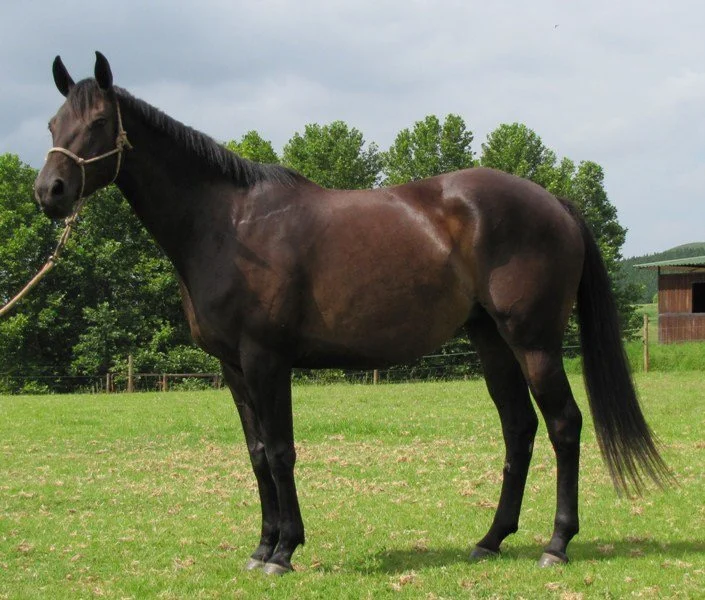
Containment Strategies: Preventing the Spread of Strangles
When strangles appears in an equine facility, implementing immediate and thorough containment measures becomes critical. Think of containment as building a fortress around the infection – every protocol serves as another wall or defensive measure to prevent the disease from spreading further. Let’s explore the comprehensive approach needed to contain this highly contagious disease effectively.
Immediate Isolation Procedures
The moment a horse shows suspicious symptoms, isolation becomes paramount. This means establishing a proper quarantine area that’s physically separated from other horses by at least 50 feet when possible. Picture this quarantine zone as a biological airlock – it needs its own ventilation, drainage, and access points. The isolated area should be downwind from healthy horses, as respiratory droplets can travel on air currents.
Creating effective isolation requires careful planning. Ideally, quarantined horses should be housed in a separate barn or building. When this isn’t possible, solid partitions between stalls can help prevent nose-to-nose contact and reduce aerosol spread. Remember that horses are social animals that naturally seek contact with others, so physical barriers must be sturdy and complete.
Biosecurity Measures
Think of biosecurity as creating a series of protective shields around both infected and healthy horses. Each measure adds another layer of protection. Essential biosecurity protocols include:
Personal Protective Equipment (PPE): Staff entering quarantine areas must wear dedicated protective clothing, including disposable gloves, boot covers, and easily washable outerwear. Consider this equipment as a spacesuit – it protects both the wearer and the environment they’re moving between.
Traffic Control: Establish one-way movement patterns through the facility. Staff should work with healthy horses first, then move to quarantined animals, never the reverse. This approach works like a hospital’s infection control protocols – moving from clean to contaminated areas reduces cross-contamination risks.
Dedicated Equipment: Each quarantine area needs its own set of tools, feeding equipment, and cleaning supplies. Color-coding these items helps prevent accidental cross-use. Think of this as creating separate households within the facility – nothing moves between them without proper disinfection.
Yard Management Protocols
Managing a facility during a strangles outbreak requires military-like precision and documentation. Create clear zones within the facility:
- Hot Zone: Areas with confirmed cases
- Suspect Zone: Areas housing horses that may have been exposed
- Clean Zone: Areas with no exposure risk
Each zone requires its own protocols, staff assignments, and equipment. Movement between zones should be strictly controlled and documented. This system works like a series of airlocks in a submarine – each barrier helps maintain the integrity of clean areas.
Cleaning and Disinfection Procedures
Proper cleaning and disinfection form the backbone of containment efforts. The process must be systematic and thorough:
Initial Cleaning: Remove all organic matter (manure, feed, bedding) as these materials can harbor bacteria and reduce disinfectant effectiveness. This step is like preparing a surface for painting – the cleaner the initial surface, the better the final result.
Disinfection: Use approved disinfectants at the correct concentration and contact time. Common choices include phenolic compounds, quaternary ammonium compounds, or specific veterinary disinfectants. Apply these products to all surfaces, including walls, floors, feed bins, and equipment.
Environmental Management: Pay special attention to shared water sources, which can become reservoirs for bacteria. Consider installing separate water systems or using individual buckets for quarantined horses. Manage manure and bedding disposal carefully to prevent environmental contamination.
Documentation and Communication
Maintaining detailed records of all containment measures serves multiple purposes. It helps track the outbreak’s progression, ensures consistency in protocols, and provides valuable information for future reference. Document:
- Daily temperature readings of all horses
- Movement of horses and personnel
- Cleaning and disinfection procedures
- Test results and treatments
- Exposure histories
Communication becomes especially crucial during an outbreak. Establish clear channels for updating all stakeholders – owners, staff, veterinarians, and neighboring facilities. Think of this as creating a chain of command during an emergency response – everyone needs to know their role and be updated on the situation’s status.
This comprehensive approach to containment requires significant effort and resources, but it represents the most effective way to control a strangles outbreak. Remember that containing strangles is like fighting a forest fire – the more quickly and thoroughly you respond, the better chance you have of preventing its spread.

Treatment Approaches: Managing Strangles with Care and Precision
The treatment of strangles requires a carefully balanced approach, combining appropriate medical intervention with thorough supportive care. Much like managing a complex orchestra, successful treatment involves coordinating multiple elements while constantly monitoring the horse’s response and adjusting the approach as needed.
Veterinary Care and Assessment
The foundation of treatment begins with thorough veterinary evaluation. Your veterinarian will assess the stage of infection and the severity of symptoms to determine the most appropriate treatment protocol. They’ll monitor vital signs, lymph node development, and any potential complications throughout the course of the disease. This ongoing assessment helps catch any concerning developments early, much like a doctor monitoring a patient’s progress during a serious illness.
The Role of Antibiotics
The use of antibiotics in strangles treatment remains a subject of thoughtful consideration in the veterinary community. In many uncomplicated cases, antibiotics may not be necessary or even advisable. This might seem counterintuitive – after all, we’re dealing with a bacterial infection. However, consider this analogy: sometimes letting a splinter work its way to the surface naturally is more effective than trying to dig it out prematurely.
When antibiotics are prescribed, they’re typically reserved for specific situations:
- Very early in the course of disease, before abscesses form
- Cases with severe systemic illness
- Complications such as bastard strangles
- Young foals or elderly horses at high risk of complications
The chosen antibiotic must be effective against S. equi, and the full course must be completed as prescribed. Penicillin-based antibiotics often serve as the treatment of choice when antibiotics are indicated.
Supportive Care
Supportive care forms the cornerstone of strangles treatment, much like providing the optimal conditions for natural healing. This includes:
Temperature Management: Fever reduction through appropriate methods such as cool compresses or fan cooling when necessary. Think of this as helping the body maintain its optimal working conditions.
Nutritional Support: Maintaining adequate nutrition becomes crucial but challenging when horses experience pain during swallowing. Offering soft, palatable feeds and ensuring fresh, clean water remains accessible can make a significant difference. Sometimes, like caring for a person with a severe sore throat, you might need to modify food consistency or presentation to encourage eating.
Environmental Conditions: Keeping the horse in a clean, well-ventilated environment while protecting them from extreme weather conditions. The stable should be neither too hot nor too cold, with good air circulation but protection from drafts.
Pain Management
Managing pain and discomfort becomes essential for both humane reasons and encouraging normal eating and drinking behaviors. Your veterinarian might prescribe non-steroidal anti-inflammatory drugs (NSAIDs) like phenylbutazone or flunixin meglumine to help reduce pain and fever. These medications work similarly to how we might take ibuprofen for a severe sore throat.
Abscess Management
As lymph node abscesses mature, they typically require specific management:
- Hot compresses can help draw abscesses to the surface
- Once mature, abscesses might need careful lancing under veterinary supervision
- Regular cleaning and monitoring of burst abscess sites prevents secondary complications
- Collection and proper disposal of abscess material prevents environmental contamination
This process requires patience – like waiting for a fruit to ripen naturally rather than forcing it to mature too quickly.
Nursing Care
Diligent nursing care makes a substantial difference in recovery. This includes:
- Regular temperature monitoring
- Careful cleaning of nasal discharge
- Gentle cleaning around burst abscess sites
- Monitoring food and water intake
- Observing breathing patterns and general demeanor
Recovery Monitoring
Throughout treatment, careful monitoring helps track progress and catch any complications early. Watch for:
- Changes in temperature patterns
- Eating and drinking behavior
- Respiratory effort
- Energy levels and general attitude
- Development or resolution of abscesses
Treatment Timeline
Understanding that recovery typically takes 3-6 weeks helps set realistic expectations. Think of recovery like healing from a significant illness – it requires time, and trying to rush the process might lead to setbacks. During this period, the horse progresses through several stages:
- Initial fever and illness
- Lymph node swelling and abscess formation
- Abscess maturation and rupture
- Gradual healing and return to normal
The key to successful treatment lies in patience, consistency, and careful attention to detail. Like managing any serious illness, cutting corners or rushing the process usually leads to complications or prolonged recovery time.
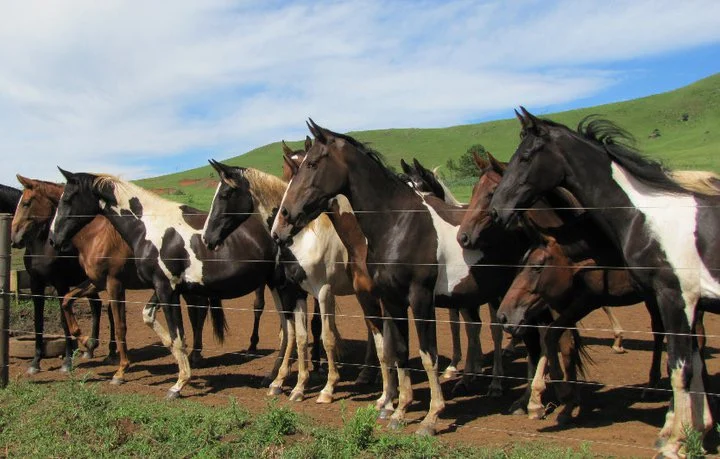
Recovery and Prevention: Building Long-Term Health and Protection
Recovery from strangles requires careful attention to detail, while prevention demands a comprehensive, forward-thinking approach. Understanding both aspects helps create a robust defense against future outbreaks while ensuring complete healing from current infections.
The Recovery Journey
Recovery from strangles follows a predictable yet individual path for each horse. The journey typically begins once the acute phase of infection subsides, usually after abscesses have burst and drained. During this time, the horse’s body works to clear remaining infection and repair affected tissues, much like a city rebuilding after a storm. This process typically spans 3-6 weeks, though some horses may need longer depending on the severity of their infection.
Signs of successful recovery include:
- A return to normal temperature (37.5-38.5°C or 99.5-101.3°F) for at least one week
- Complete healing of burst abscesses
- Return of normal appetite and energy levels
- Clear nasal passages without discharge
- Comfortable swallowing and breathing
During recovery, horses need gradual reintroduction to normal activities. Think of this like an athlete returning from injury – rushing back too quickly can lead to setbacks. Start with short periods of controlled exercise, slowly building back to normal routine as the horse demonstrates readiness.
Preventing Future Outbreaks
Prevention of strangles relies on a multi-layered approach, combining vaccination strategies with robust biosecurity measures. Consider this like building a fortress with multiple defensive walls – each layer adds protection against potential invasion.
Vaccination Strategies
Modern vaccines offer significant protection against strangles, though no vaccine provides complete immunity. Your veterinarian can help develop an appropriate vaccination protocol based on your horse’s specific risk factors. Vaccine types include:
- Injectable vaccines: Providing systemic immunity through intramuscular injection
- Intranasal vaccines: Stimulating local immunity in the respiratory tract where infection typically begins
Think of vaccination as training your horse’s immune system to recognize and fight S. equi before it can establish infection. Like any training program, timing and consistency matter greatly.
Biosecurity as Prevention
Establishing strong biosecurity measures helps prevent strangles introduction and spread. Essential preventive measures include:
- Quarantine protocols for new arrivals: All new horses should undergo a minimum 2-3 week isolation period
- Regular health monitoring: Daily temperature checks can catch early signs of illness
- Proper facility design: Maintaining appropriate spacing between horses and good ventilation
- Equipment management: Using individual tack and grooming tools, or proper cleaning between uses
- Staff training: Ensuring all handlers understand and follow hygiene protocols
Risk Assessment and Management
Understanding and managing risk factors helps focus preventive efforts where they matter most. Consider:
- Horse population characteristics: Age, health status, and previous exposure
- Facility design and management: Ventilation, spacing, traffic patterns
- Movement patterns: Competition schedules, breeding activities, new arrivals
- Regional disease prevalence: Local outbreak status and risk levels
Long-term Management Strategies
Creating a sustainable prevention program requires ongoing commitment and regular review. Key components include:
- Regular veterinary consultations to assess and update prevention strategies
- Staff training and protocol review sessions
- Facility maintenance and improvement planning
- Documentation systems for health records and biosecurity measures
- Emergency response planning for potential outbreaks
Building Natural Immunity
Some horses develop strong natural immunity after recovering from strangles. However, this shouldn’t be relied upon as the sole means of protection. Think of natural immunity as one tool in your prevention toolkit – valuable but not sufficient on its own.
The Role of Testing Regular testing can play a vital role in prevention, particularly in high-risk environments. Consider implementing:
- Screening tests for new arrivals
- Periodic surveillance testing in large populations
- Testing before mixing previously separated groups
- Post-recovery testing to ensure complete clearance
This testing strategy works like an early warning system, helping identify potential problems before they become major outbreaks.
Creating a comprehensive recovery and prevention program requires careful planning and consistent execution. Success depends on understanding that both recovery and prevention are ongoing processes rather than one-time events.

Post-Infection Management: Ensuring Complete Recovery and Safe Return to Activity
After a horse recovers from strangles, careful management becomes crucial to ensure both the individual horse’s health and the safety of the wider equine community. Post-infection management requires patience, systematic testing, and careful observation – much like rehabilitation after a serious illness requires structured follow-up care.
Confirming Disease Clearance
Before considering a horse fully recovered, veterinarians need to confirm the complete elimination of S. equi from the horse’s system. This process typically begins 3-4 weeks after all clinical signs have resolved. The testing protocol usually follows a systematic approach that includes multiple sampling methods:
Guttural pouch endoscopy allows veterinarians to visually inspect these crucial areas where bacteria might persist. Think of this examination as checking all the hidden corners of a room – thoroughness matters immensely. During this procedure, veterinarians look for any signs of inflammation, discharge, or chondroids (small, hardened collections of infected material that can harbor bacteria).
Three consecutive negative PCR tests from both nasal swabs and guttural pouch lavages, taken at weekly intervals, typically provide sufficient confidence that a horse is free from infection. This multiple-testing approach works like a series of safety checks, each negative result building confidence in the horse’s disease-free status.
Gradual Return to Normal Activities
Once testing confirms disease clearance, horses can begin their return to regular activities. This process should follow a structured progression, similar to an athlete’s return-to-play protocol after injury. The progression might look like this:
- First Week: Limited turnout in a designated recovery area, avoiding contact with other horses
- Second Week: Gradual introduction to light exercise, monitoring for any signs of fatigue or respiratory distress
- Third Week: Increasing exercise intensity while continuing to monitor recovery
- Fourth Week: Careful reintegration with regular herd mates, maintaining vigilant observation
Throughout this progression, handlers should watch for any signs that might indicate incomplete recovery or complications, such as:
- Increased respiratory effort during exercise
- Return of nasal discharge
- Changes in energy level or appetite
- Swelling in the throat or neck region
Monitoring for Carriers
Some horses become asymptomatic carriers after infection, capable of spreading the disease without showing symptoms themselves. These carriers pose a particular challenge because they appear healthy while potentially harboring infection in their guttural pouches. Regular screening becomes essential, especially in facilities with frequent horse movement or before introducing recovered horses to new herds.
Long-term Immunity Considerations
After recovery, most horses develop strong immunity against S. equi that typically lasts several years. However, this immunity isn’t guaranteed to be lifelong. Understanding this aspect helps inform future management decisions regarding vaccination and exposure risk. Veterinarians often recommend maintaining detailed records of infection and recovery dates to help guide future health decisions.
Documentation and Record Keeping
Maintaining comprehensive records of the infection episode, treatment, and recovery becomes invaluable for future reference. These records should include:
- Detailed timeline of the infection and recovery process
- All test results and dates
- Treatment protocols used
- Vaccination history before and after infection
- Any complications or unusual symptoms
- Dates of return to various activities
Environmental Management
Even after horses recover, attention to environmental management remains important. This includes:
- Complete disinfection of all equipment and spaces used during illness
- Proper disposal of potentially contaminated materials
- Review and updating of biosecurity protocols based on lessons learned Implementation of preventive measures to reduce future outbreak risks
Communication Protocol
Establishing clear communication with all stakeholders helps ensure smooth post-infection management. This includes regular updates to:
- Horse owners
- Stable managers
- Veterinary team
- Neighboring facilities
- Competition venues (if applicable)
The post-infection period represents a critical time for both individual horses and the wider equine community. Success during this phase requires careful attention to detail, patience, and systematic approach to testing and reintegration. Understanding that proper post-infection management serves not just the recovered horse but the entire equine community helps emphasize the importance of following these protocols diligently.

Financial and Practical Considerations: Understanding the Economic Impact of Strangles
Managing a strangles outbreak involves significant financial implications and practical challenges that extend far beyond the immediate medical costs. Understanding these considerations helps stable owners, managers, and horse owners prepare adequately and make informed decisions throughout the outbreak period.
Direct Medical Costs
The immediate medical expenses associated with strangles can accumulate quickly. These costs typically include veterinary examinations, diagnostic testing, and treatments. Initial testing might require multiple sample collections and laboratory analyses, with PCR tests ranging from $50-150 per sample and bacterial cultures costing $30-75 each. When we consider that confirming recovery often requires three consecutive negative tests, diagnostic costs alone can become substantial.
Treatment expenses vary significantly based on case severity. While uncomplicated cases might only require supportive care, horses developing complications like bastard strangles may need intensive veterinary intervention, including ultrasound examinations, additional diagnostic testing, and prolonged antibiotic therapy. These complicated cases can result in veterinary bills reaching several thousand dollars.
Operational Impact
The operational consequences of a strangles outbreak often exceed direct medical costs. Quarantine periods typically last 4-6 weeks minimum, during which facilities face numerous operational challenges. Boarding facilities must maintain separate staff schedules for quarantined and healthy horses, potentially increasing labor costs by 30-50%. Additional expenses arise from purchasing personal protective equipment, dedicated tools and equipment, and extra cleaning supplies.
Revenue loss often becomes a significant concern during outbreaks. Riding schools may need to cancel lessons, training facilities might suspend accepting new horses, and boarding stables could face temporary closure. These disruptions typically last at least 6-8 weeks, potentially resulting in revenue losses of thousands of dollars per week for medium to large operations.
Insurance Considerations
Insurance plays a crucial role in managing financial risk during strangles outbreaks. Horse owners should review their mortality and major medical insurance policies carefully, as coverage for infectious diseases can vary significantly. Some policies may cover diagnostic testing and treatment, while others might exclude certain aspects of care or impose strict notification requirements.
Facility insurance becomes particularly important during outbreaks. Business interruption insurance might cover some revenue losses, though policies often include specific exclusions or waiting periods for infectious disease outbreaks. Liability insurance should be reviewed to understand coverage for potential claims related to disease spread.
Long-term Business Impact
The long-term effects of a strangles outbreak can influence a facility’s reputation and business prospects. Transparent communication and proper management help minimize reputational damage, but facilities should prepare for potential client concerns and possible boarding contract terminations. Some facilities find that implementing more robust preventive measures, while initially costly, helps rebuild client confidence and may justify slight increases in boarding fees to offset these investments.
Record Keeping Requirements
Maintaining detailed records becomes essential for both medical and financial reasons. These records should document all cases, treatments, test results, and associated costs. Such documentation proves valuable for insurance claims, potential legal issues, and future outbreak prevention planning. Digital record-keeping systems, while representing an initial investment of $500-2000, often prove cost-effective by improving accuracy and accessibility of critical information.
Staff Management and Training
Investing in staff training and education represents another significant consideration. While initial training might cost $200-500 per staff member, this investment helps prevent future outbreaks and improves response effectiveness when cases do occur. Regular updates to protocols and refresher training sessions should be budgeted as ongoing expenses.
Resource Allocation
Effective resource management during an outbreak requires careful planning and potential reallocation of existing resources. Facilities need to consider:
The cost of creating and maintaining isolation areas, including potential facility modifications Investment in additional cleaning and disinfection equipment Increased bedding and feed storage requirements to minimize delivery frequency Additional labor costs for enhanced cleaning and separate care routines
Prevention Investment
Prevention often proves more cost-effective than managing an active outbreak. Regular vaccination programs, while representing an ongoing expense of $30-60 per horse twice yearly, offer significant protection against outbreaks. Similarly, investing in proper facility design and ventilation systems might require substantial upfront costs but reduces long-term risk and associated expenses.
Creating a Financial Buffer
Given the significant costs associated with strangles outbreaks, facilities should consider maintaining an emergency fund specifically for disease management. This fund should cover at minimum one month’s operating expenses plus estimated quarantine-related costs. Such preparation helps ensure proper management decisions aren’t compromised by immediate financial pressures.

Managing and Preventing Strangles: A Commitment to Equine Health
The management of strangles represents one of the most significant challenges faced by the equine community, requiring a delicate balance of medical expertise, practical management, and financial prudence. As we’ve explored throughout this comprehensive guide, successfully managing this disease demands a thorough understanding of its nature, coupled with swift, decisive action when cases appear. The impact of strangles extends far beyond the affected horse, touching every aspect of equine facility operations and requiring careful coordination among owners, veterinarians, and stable managers.
Understanding strangles as a complex yet manageable disease helps put its challenges into perspective. While the initial diagnosis of strangles in a facility can feel overwhelming, remember that centuries of veterinary experience and modern medical advances have provided us with effective tools and strategies for containing and treating this infection. The key lies in early recognition, prompt implementation of containment measures, and appropriate treatment protocols, all supported by thorough documentation and clear communication.
Perhaps most importantly, the management of strangles teaches us valuable lessons about the importance of prevention and preparedness in equine health care. Every outbreak provides opportunities to refine protocols, improve facility design, and strengthen biosecurity measures. These improvements, while sometimes costly, represent investments in the long-term health and welfare of our equine populations.
The financial considerations, while significant, should be viewed through the lens of protecting both individual horses and the broader equine community. When we consider the potential costs of an outbreak – both direct medical expenses and indirect operational impacts – the value of preventive measures becomes clear. Maintaining strong biosecurity protocols, implementing regular vaccination programs, and providing ongoing staff training proves far more cost-effective than managing active outbreaks.
As we look to the future, continued research into strangles prevention and treatment offers hope for even more effective management strategies. However, the fundamental principles outlined in this guide – early detection, proper isolation, thorough treatment, and careful recovery monitoring – will remain the cornerstones of successful strangles management. By maintaining vigilance and following these established protocols, the equine community can work together to minimize the impact of this challenging but manageable disease.
Each successful recovery from strangles, and each prevented outbreak, represents a victory not just for individual horses and facilities, but for the entire equine community. Through shared knowledge, consistent application of best practices, and a commitment to excellence in horse care, we can continue to improve our ability to manage and prevent this historic equine disease.

Read more about other horse diseases here:
Understanding Equine Viral Arteritis (EVA) in Stallions: Risks, Management, and Prevention
Equine Influenza: A Complete Guide to Symptoms, Prevention, and Treatment
Additional Resources for Understanding and Managing Strangles
For those seeking to deepen their understanding of strangles and stay current with the latest research and management practices, several valuable resources are available from respected equine health organizations and research institutions.
Professional Organizations and Research Centers The American Association of Equine Practitioners (AAEP) maintains comprehensive guidelines for strangles management, regularly updated to reflect the latest scientific understanding. Their website offers detailed protocols for veterinarians and stable managers, including specific recommendations for outbreak management and prevention strategies. Visit their website at aaep.org.
The British Horse Society has developed extensive educational materials about strangles, including their “Strategy to Eradicate and Prevent Strangles (STEPS)” program. This initiative provides practical guides, educational videos, and management tools specifically designed for horse owners and stable managers.
For those interested in the latest scientific research, the Journal of Equine Veterinary Science regularly publishes peer-reviewed studies on strangles and other infectious diseases. Many universities with veterinary programs, such as the University of Kentucky’s Maxwell H. Gluck Equine Research Center, conduct ongoing research into strangles prevention and treatment.
Educational Materials and Online Learning
The Horse Trust offers free online courses specifically focused on strangles management and prevention. These courses provide valuable information for both professionals and horse owners, covering everything from basic disease understanding to advanced management protocols.
The World Horse Welfare organization provides downloadable resources, including printable isolation procedures, biosecurity checklists, and educational posters suitable for posting in stable areas. These materials help reinforce good management practices and serve as quick reference guides during active outbreaks.
Mobile Applications and Digital Tools
Several mobile applications now exist to help track horse health and manage disease outbreaks. The Equine Disease Communication Center (EDCC) app provides real-time updates about disease outbreaks in different regions, helping facilities make informed decisions about horse movement and event participation.
Practical Guides and Publications
“The Complete Guide to Strangles” by The Horse Trust and British Horse Society provides comprehensive information in an accessible format. This guide includes detailed photographs, diagnostic flowcharts, and practical management protocols.
“Equine Infectious Diseases” by Debra C. Sellon and Maureen Long offers an in-depth scientific perspective on strangles and other equine diseases, making it an excellent reference for veterinarians and serious students of equine health.
Support Networks and Communities
The Strangles Working Group, an international collaboration of veterinary researchers and practitioners, regularly publishes updated guidelines and recommendations based on the latest research findings.
Many regional horse owner associations maintain support networks for facilities dealing with strangles outbreaks, offering practical advice and sometimes even shared resources during challenging times.
Continuing Education
For veterinarians and stable managers, several organizations offer continuing education courses specifically focused on infectious disease management in horses. The American Association of Equine Practitioners regularly hosts webinars and workshops on this topic.
Government Resources
The USDA’s Animal and Plant Health Inspection Service (APHIS) provides regulatory guidelines and reportable disease information relevant to strangles management in the United States.
Each of these resources offers valuable perspectives and information, helping build a comprehensive understanding of strangles management. Remember that staying informed about the latest developments in strangles research and management helps ensure the best possible care for our equine companions.
Consider bookmarking these resources and checking them periodically for updates, as our understanding of strangles management continues to evolve with new research and improved management techniques.

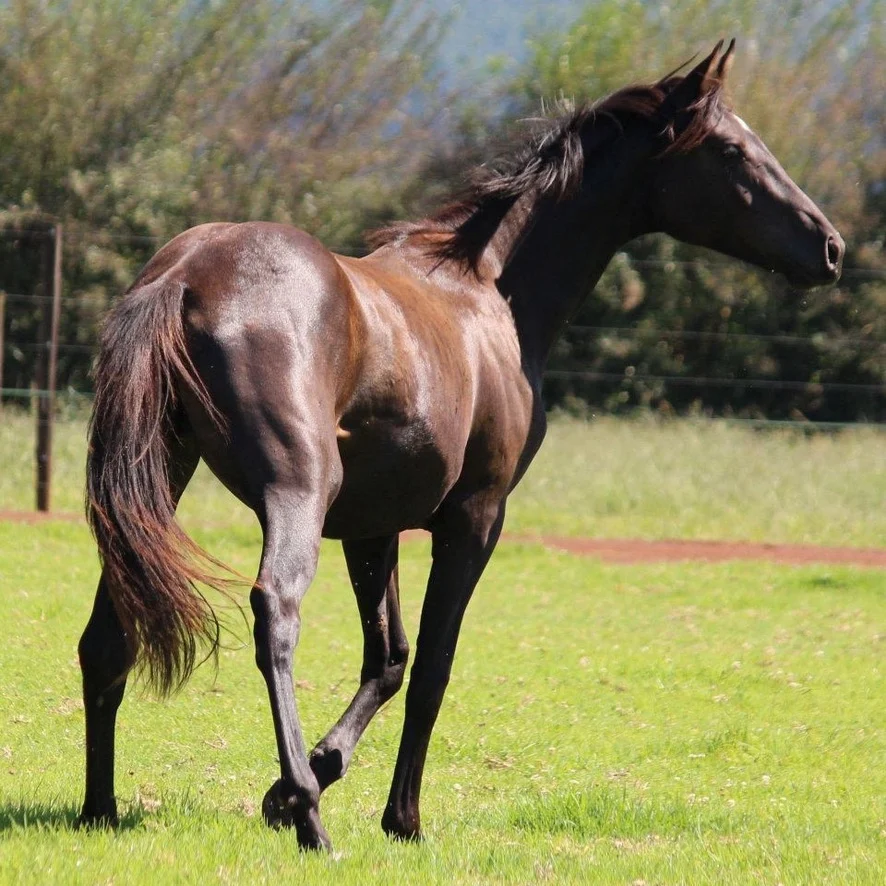
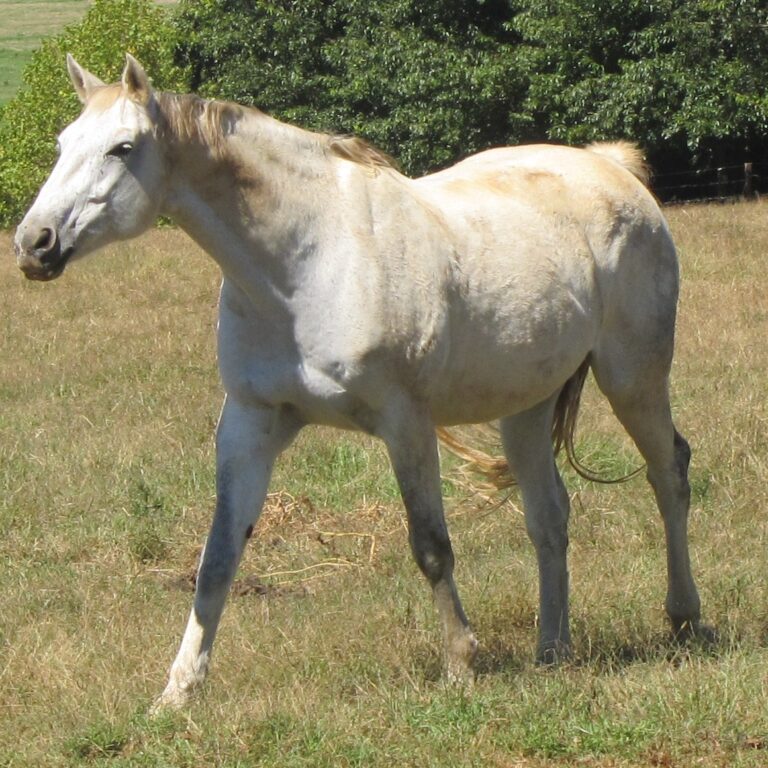


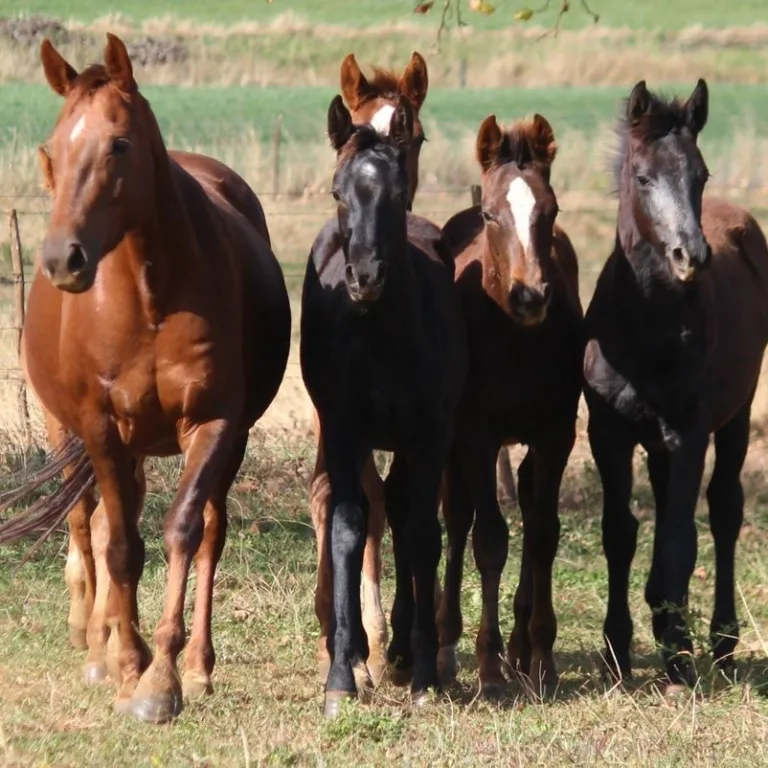
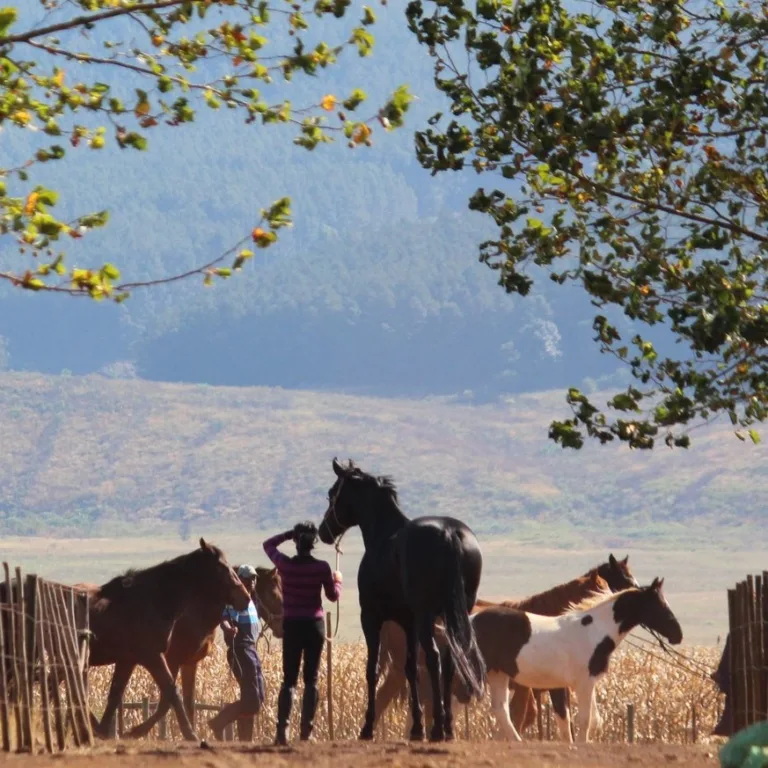

Leave a Reply